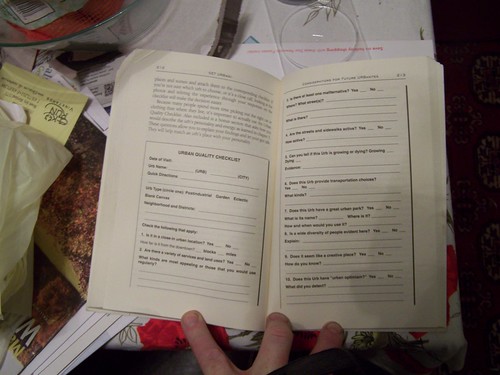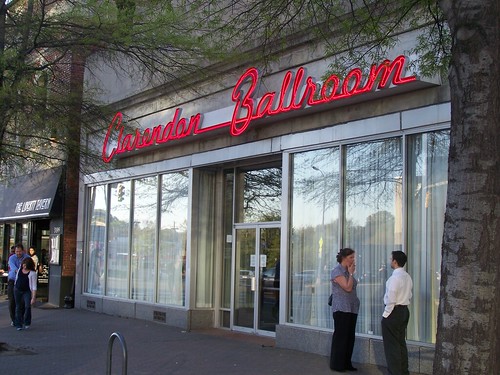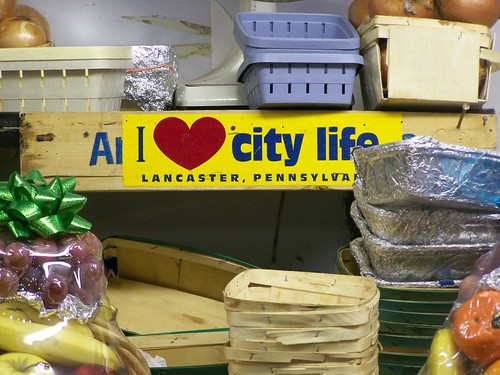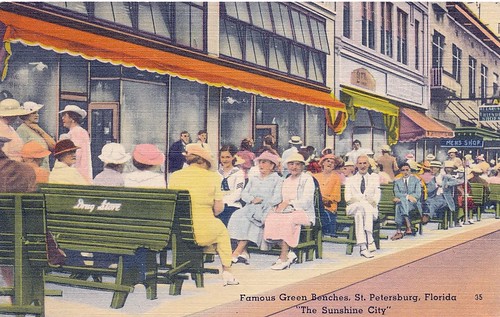Get Urban 2.0: DC continues to add population
The US Census reports that population estimates for "last year" (July 2011 to June 2012) show a continued rise in DC's population to 632,323 -- up from 619,020 a year earlier. Which puts DC ahead of Baltimore according to the Baltimore Sun.
DC, a unique city-state, had its data released as part of the release of national and state level data. Other cities won't have data reported out until March, when county data is released.
It reminds me of the proposal by Norman Mailer when he ran for Mayor of New York City in 1969, to make New York City a state separate from New York State.
-- "Should New York City Secede from the State?" (The New York Times, May 5, 1969)
DC is the only city-state in the U.S. Sure, we don't have representation in Congress (and should, therefore, not have to pay federal taxes) but now that the population demographics are shifting upward economically, DC is increasingly a better place to be.
Although we have plenty of issues in terms of governance, poverty, quality of life, the ability to develop an economy not so dependent on the federal government, etc.
Who lives downtown research by Eugenie Birch
With regard to the general phenomenon of cities, or at least, their downtowns, adding population, the writings of Professor Birch of the University of Pennsylvania are always worth revisiting.
-- Who Lives Downtown Today? (And Are They Any
Different from Downtowners of Thirty Years Ago)? (2005)
-- gussied up report published by Brookings
Other interesting urban living resources
-- Reasons to Live in Downtown Austin
-- Successful Upper Floor Housing Development, National Main Street Center, more for smaller communities
-- "Why I live Downtown(and so should you!)," Salt Lake Urbanite blog
-- Michigan placemaking initiative
-- "Miami looks to revive urban living," Orlando Sentinel, 2004
-- "Sky's the new limit for urban living in Texas, and beyond," USA Today, 2007
Not every downtown living initiative is working
The "Downtown Dilemma" series from the Florida Times-Union; this is a good counterpoint, because Jacksonville, Florida hasn't been successful at attracting downtown residents. You still need a center, traditional urban design, the ability to convert buildings to new housing, which in turn will then drive demand for new construction multiunit housing, etc.
• Lights dimming on Jacksonville's bold plans for downtown
• A day in the life of downtown Jacksonville
• Jacksonville's urban pioneers: Come join us.
• Churches lead effort to keep downtown Jacksonville alive
Get Urban, book by Kyle Ezell
Mr. Ezell, an urban planner based in Columbus, Ohio (I heard him speak at the National Trust for Historic Preservation annual meeting around when the book was published in 2004) wrote Get Urban (now out-of-print but available used) to help people realize and achieve their desire to live in a center city downtown or neighborhood, not necessarily in big cities like New York but in smaller midwestern cities like Omaha, St. Louis, Columbus, etc.
It's an interesting and important book, because it functions like a self-help manual, outlining the characteristics (not unlike Dan Burden's old article, "How Can I Find and Help Build a Walkable Community?") to look for to find a good place to live "in the city," because face it, even today, 8 years after the book was published, most people don't have a lot of experience searching for a place to live in an urban neighborhood, compared to the search for a house in the suburbs.
 I hadn't thought of it before, but I would argue that Get Urban is worth updating and reprinting, given the acceleration of trends supporting urban living, especially in the center cities (but also in town centers in the suburbs, places like Clarendon in Arlington Virginia, or railroad suburbs outside of Chicago, Philadelphia, or New York City).
I hadn't thought of it before, but I would argue that Get Urban is worth updating and reprinting, given the acceleration of trends supporting urban living, especially in the center cities (but also in town centers in the suburbs, places like Clarendon in Arlington Virginia, or railroad suburbs outside of Chicago, Philadelphia, or New York City).Revitalizing city centers as places to live by potential residents with many choices is a process.
The book is great though because it teaches people what urbanism is. As an advocate, activist, and planner, I know that I get very much worked up when "city" residents apply suburban planning paradigms to fundamentally urban questions (primacy for the car being a big one, but also limiting denser development at subway stations, and restrictions on mixed use), without acknowledging or recognizing that they are imprinted with a suburban paradigm and applying the principles to the city.
For example, chapter 3, "Getting Urban 101" is described as a minicourse on city living, with 10 lessons:
• Go toward "trendy"
• Understand urban energy
• Identify urban street shapes
• Avoid streets with suburban shapes
• Rethink "city"
• Identify the authentic city
• Conceptualize the "urb"
• Detect urb personalities
• Beware of fake urbs
• Recognize the different types of urbs
Open question #1: retaining families
Another element to cover in an updated Get Urban book would be how to maintain the pro-urban living trend (also see Christopher Leinberger's book, Option of Urbanism and the more recent report, DC: The WalkUP Wake-Up Call - The Nation's Capital As a National Model for Walkable Urban Places) as households change from singles/shared living to couples and then to couples with children.
See for example "American cities fighting to keep Millennials" from USA Today and "How Philly Can Keep Millennials in the City After They Have Kids: Asking twentysomethings to patiently wait for improvements won’t work" from the Philly Post blog. I also wrote about this in "The future of center city population retention and quality neighborhood schools."
 Right: obligatory photo for Charlie. Clarendon in Arlington County, Virginia.
Right: obligatory photo for Charlie. Clarendon in Arlington County, Virginia.Open question #2: retaining residents living in mixed use entertainment-residential districts as they age
I remember going on tours of the Warehouse and Gateway Districts in Cleveland in 2002, and how it specifically was mentioned that people age out of the communities around 35 years of age, when their interests change, they are less interested in going out multiple nights per week, are less willing to deal with noise and other aspects of living in entertainment districts.
 This has come up in the context of U Street NW in DC, which I discussed in the 2009 blog entry, "Daypart and age-group planning in mixed use (commercial) districts." But now that I think about it, the concept should be extended city-wide (not just in DC but in other cities as well) and should include housing planning as well.
This has come up in the context of U Street NW in DC, which I discussed in the 2009 blog entry, "Daypart and age-group planning in mixed use (commercial) districts." But now that I think about it, the concept should be extended city-wide (not just in DC but in other cities as well) and should include housing planning as well. (I make that point generally, that we need to change neighborhood planning in many respects, but another key one is to expand the range of housing choices that are typically present in neighborhoods. Most neighborhoods are dominated by one specific housing type, which makes the neighborhood less resilient in the face of demographic and social change.)
Open question #3: seniors
Aging in place. One of the issues that is big in aging policy is "aging in place," or what sometimes is referred to as "naturally occuring retirement communities", for example as is described in "When the Neighborhood Is the Retirement Village" from the New York Times. There are a bunch of these initiatives in DC. I think the first one was in Capitol Hill. Also see the Streetsblog Capitol Hill/GGW entry, "Seniors want more livable places, and AARP shows how."
Aging communities spend less. While it's important to accommodate aging residents and to help them stay in their neighborhoods ("Seniors in the city," Governing Magazine), it's important to acknowledge the downside that occurs because as households age, they consume (buy) less, fewer households with children mean fewer students going to neighborhood schools and can lead to school closure, and there is less patronage of businesses in neighborhood commercial districts, which contributes to business failure and vacancies.
Postcard image of shuffleboard in St. Petersburg, Florida via Flickr, jmlwinder.
 Left: postcard of people sitting on St. Petersburg Florida's famous "green benches."
Left: postcard of people sitting on St. Petersburg Florida's famous "green benches."We don't normally acknowledge that one of the reasons for economic stagnation in various DC neighborhoods over the past few decades has been aging neighborhoods and infrequent housing turnover.
It's only in the past couple years where population influx of younger, higher income new residents has reached critical mass in a number of neighborhoods, leading to significant commercial district improvement.
A separate trend is people retiring to cities because they want to take advantage of the amenities available in downtown neighborhoods, arts districts, museums, etc. It happens that Kyle Ezell has a book on that topic too, Retire Downtown: The Lifestyle Destination for Active Retirees and Empty Nesters, although I've not read it.
There are other publications on the subject, including "Retire Downtown: A Market Emerges for Active Living Downtown" from UWEX and "Seniors—In Which Cities Are They Living?" from Urban Land Magazine.
Labels: commercial district revitalization, demographics, housing choice, housing market, housing policy, urban design/placemaking, urban revitalization






4 Comments:
Well, Richard, you'll be happy to know it looks like I will now be one of the thousand fools moving into the District every month. So I'll be kicking Arlington around like every other DC residents.
Excellent post. I don't see the word "crime" which is probably the biggest driver of cities NOT regenerating. And lets be honest the current drop in crime rates is not due to better policing/technology/break thru but rather some magic beans.
When I contrast this and your excellent comment on GGW today, I think the point about creating "staggered communities" that aren't all one mix is critical. That is my big fear about Arlington and Wilson Blvd in 20 years -- the current scheme is nice but it won't transition well.
We've talked about building for the next 20 years, 40 years and what not. Developers are just building for 5-10. (their initial sale and maybe one resale). Urbans need longer timeframes.
Rather than looking at HP and what not as a bar to a magic market, realize it may be benefitting cities to slowing entry into the market down.
I don't have time today to say more -- trying to get out of town -- but your guidance and suggestions is as always, appreciated, even while I disagree with some of your points. Merry Christmas and Peace on earth.
as always, great points. While I don't write in a way that invites comment, actually it is supposed to be a two way conversation, and while it may be thus only between the two of us, because you are the only consistent commenter, I learn a lot from your and appreciate your insights, which in turn I transmogrify... so yes, thank you, and I hope we can meet, sooner, rather than later.
Note that there is a house for sale on our block... a bit overpriced though. And we don't live in a hip part of the city but it's great regardless.
With regard to your other points, I have to expand this entry and follow up.
The point I didn't make, that I often do, is that situations for weak market cities are much different than the options available to strong market cities.
So DC has different opportunities from Flint. There are many factors that come into it. Crime is huge. So are property taxes (e.g., Detroit's are double DC's although technically a $200,000 house in Detroit would probably be worth $600,000 here, but Baltimore has problems in this regard also). So are schools.
Even so, neighborhoods in weak markets can still succeed. That in fact is what happened in DC for a long time, when it was a comparatively weak market. E.g., Capitol Hill. So year after year (not just in the last 3-4 years as most people who comment on GGW seem to think) the critical mass of urban pioneers slowly built and incremented upwards (with plenty of individual and neighborhood setbacks along the way), for 40+ years, until they reached critical mass and the point at which the trend could accelerate and be noticeable.
But overall DC was never a weak market city the same way that St. Louis or Cleveland or Detroit is. Which makes things very much different here.
In short there are two different Get Urban strategies, one for strong markets and one for weak markets.
Happy holidays!
RE: strong market/weak market my takeaway is that cities are only in charge of maybe 10-15% of their destines; there are much larger factor at play.
I've often compared cleveland to Toronto; basically similar in 1970 but because Toronto can capture financial and other jobs as a national center there were able to retain white-collar employment which disappered in cleveland. It wasn't the weather!
In terms of an urban monoculture I think that gets us out of the current urban theories and back to Jacobs and "mixing zones" The future is not linear and you need to have some protection in case the projects go askew.
yep. In the process of corporations reorganizing on a national and international scale, for the most part, regionally significant cities got supplanted for national "headquarters" cities.
I hadn't thought of it before, but what happened to PGH and Cleveland and St. Louis (among others) presaged the harder more recent falls of places like Detroit.
It's all about center-periphery arguments (Andre Gunder Frank).
At City Lights Bookstore I saw a book on this topic sort of, but didn't have the $ to buy all the books I would have wanted to get...
http://www.temple.edu/tempress/titles/2081_reg_print.html
Post a Comment
<< Home